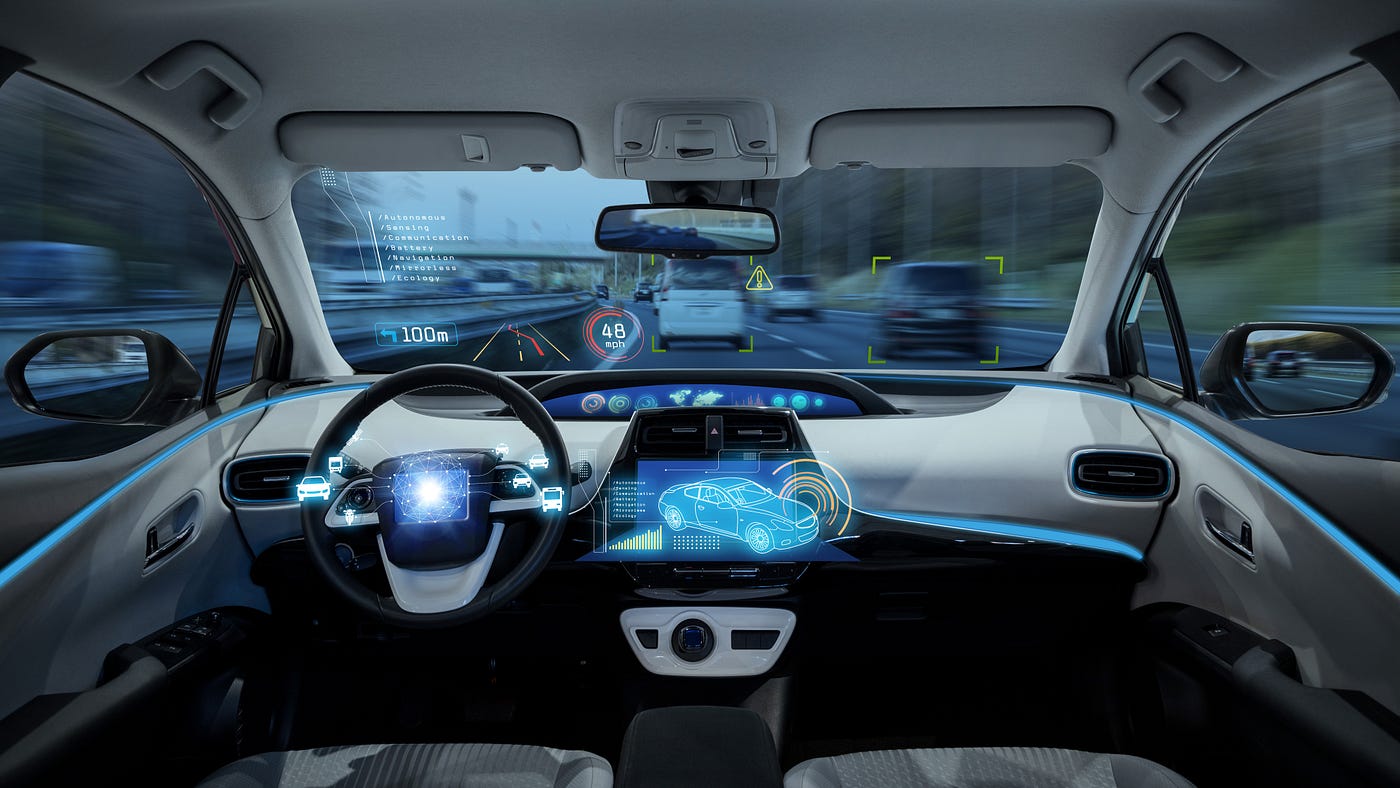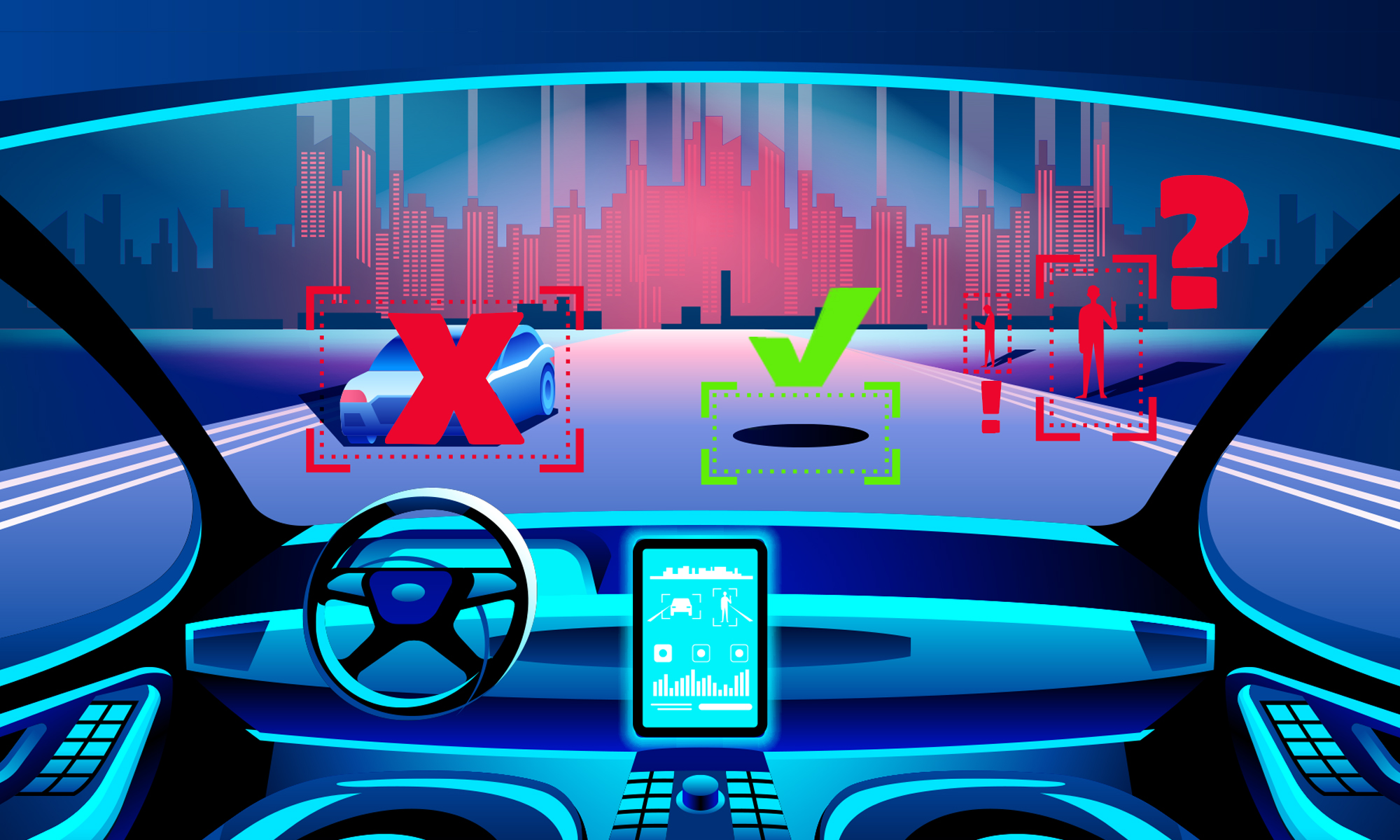Exploring the Potential and Risks of Autonomous Vehicles
 Fried Mind
Fried Mind
Self-driving cars: A game-changer for transportation?
In this blog post, we will explore the potential and risks of autonomous vehicles. We will consider the ways in which autonomous vehicles could revolutionize transportation, as well as the ethical and practical considerations that must be taken into account as the technology is developed and implemented. We will also examine the current state of autonomous vehicle development and consider the future potential of this transformative technology.
Autonomous vehicles, or self-driving cars, are vehicles that are capable of navigating and driving without the need for human input. This technology has the potential to transform transportation, making it safer, more efficient, and more accessible. For example, autonomous vehicles could reduce the number of traffic accidents caused by human error, increase the capacity of roads by allowing for closer spacing between vehicles, and provide transportation options for people who are unable to drive due to age or disability.
Current State

The current state of autonomous vehicles varies widely, depending on the level of autonomy being considered.
At the lowest level of autonomy, there are already a number of commercially available vehicles that have some autonomous capabilities, such as the ability to assist with parking or maintain a safe following distance on the highway. These vehicles are often referred to as "driver assistance" systems, as they are designed to assist the driver rather than replace them.
At higher levels of autonomy, there are a number of autonomous vehicles being developed and tested by companies and research institutions around the world. These vehicles are capable of navigating roads and traffic without human input, although they may still have a human safety driver on board to take control in the event of an emergency. Some of these vehicles are already being used in limited pilot programs or demonstrations, although they are not yet widely commercially available.
At the highest level of autonomy, there are no commercially available vehicles that are fully autonomous in all driving conditions. This is the most challenging and complex level of autonomy to achieve, as it requires the vehicle to be able to handle any situation that it might encounter on the road. While there are a number of companies and researchers working on fully autonomous vehicles, it is likely to be several years before they are available for widespread commercial use.
Potential Risks of Autonomous Vehicles

Malfunctions or errors leading to accidents or injuries: One concern with autonomous vehicles is the potential for the technology to malfunction or make mistakes, which could lead to accidents or injuries. This could be due to technical issues with the vehicle itself, or errors in the algorithms that drive the car. Ensuring the safety of autonomous vehicles will be critical in order to gain public trust and acceptance of the technology.
Ethical considerations related to programming: There are also ethical considerations related to the programming of autonomous vehicles, such as how they should prioritize the safety of passengers versus pedestrians in the event of a collision. This is known as the "trolley problem," and it raises questions about the values and priorities that should be built into the algorithms that drive autonomous vehicles.
Job displacement for drivers: The widespread adoption of autonomous vehicles could lead to job displacement for drivers, as the technology becomes increasingly capable of performing driving tasks. This could have significant economic and social implications and will require careful consideration and planning to ensure that affected workers are able to find new employment opportunities.
Changes in transportation funding and regulation: The adoption of autonomous vehicles could also lead to changes in the way that transportation is funded and regulated. For example, there may be changes in the way that roads are funded, or in the way that vehicle ownership is taxed. These changes could have significant implications for governments, businesses, and individuals.
Potential for hacking or cyber attacks: Autonomous vehicles rely on complex systems that are vulnerable to hacking or cyber attacks, which could have serious consequences if the systems are compromised.
For example, a hacker could potentially take control of an autonomous vehicle and cause it to crash, or manipulate the vehicle's sensors to cause it to behave erratically. Hackers could also potentially access sensitive data, such as the vehicle's location or the personal data of its occupants.
Legal and liability issues: Legal and liability issues are an important consideration when it comes to autonomous vehicles. Autonomous vehicles raise a number of questions about who is responsible for accidents or other incidents that involve vehicles. Determining liability in the case of autonomous vehicles is complex and will likely require the development of new legal frameworks and regulations. It will also be important to consider issues such as insurance, as it is not yet clear how insurance policies will need to be modified to cover autonomous vehicles.
Difficulty in integrating autonomous vehicles into existing infrastructure and traffic patterns: There are a number of issues to consider when it comes to integrating autonomous vehicles into existing infrastructure and traffic patterns. One challenge is ensuring that the vehicles can safely navigate roads and intersections that were not designed with autonomous vehicles in mind. This may require the development of new infrastructure, such as dedicated lanes or traffic signals, or the modification of existing infrastructure.
Another challenge is ensuring that autonomous vehicles are able to effectively communicate with other road users, such as pedestrians, bicycles, and traditional vehicles. This may require the development of new communication systems or the use of existing technologies, such as traffic signals or road markings.
Public acceptance and trust in the technology: Building public acceptance and trust in autonomous vehicles will likely require a combination of education, regulation, and industry efforts. For example, regulators may need to set safety standards and requirements for autonomous vehicles, while industry players may need to communicate openly about the technology and its capabilities. It will also be important for autonomous vehicle developers and operators to engage with the public and seek input on the development of the technology.
In conclusion, autonomous vehicles have the potential to revolutionize transportation and bring a range of benefits, such as increased safety and efficiency. However, there are also a number of risks and challenges associated with the technology, including issues related to safety, ethics, and regulation. In order to fully realize the benefits of autonomous vehicles, it will be important for industry professionals, policymakers, and researchers to work together to address these challenges and ensure that the technology is developed and used ethically and responsibly. As the field continues to advance, it will be important to carefully consider the potential risks and rewards of autonomous vehicles in order to maximize the benefits and minimize the risks of this transformative technology. Thank you for reading!
Quote for this blog:
"The real danger is not that machines will begin to think like men, but that men will begin to think like machines." - Sydney J. Harris
Subscribe to my newsletter
Read articles from Fried Mind directly inside your inbox. Subscribe to the newsletter, and don't miss out.
Written by

Fried Mind
Fried Mind
Loading.....